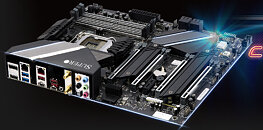Supermicro Adds New Max-Performance Intel-Based X14 Servers
Supermicro, Inc. a Total IT Solution Provider for AI/ML, HPC, Cloud, Storage, and 5G/Edge, today adds new maximum performance GPU, multi-node, and rackmount systems to the X14 portfolio, which are based on the Intel Xeon 6900 Series Processors with P-Cores (formerly codenamed Granite Rapids-AP). The new industry-leading selection of workload-optimized servers addresses the needs of modern data centers, enterprises, and service providers. Joining the efficiency-optimized X14 servers leveraging the Xeon 6700 Series Processors with E-cores launched in June 2024, today's additions bring maximum compute density and power to the Supermicro X14 lineup to create the industry's broadest range of optimized servers supporting a wide variety of workloads from demanding AI, HPC, media, and virtualization to energy-efficient edge, scale-out cloud-native, and microservices applications.
"Supermicro X14 systems have been completely re-engineered to support the latest technologies including next-generation CPUs, GPUs, highest bandwidth and lowest latency with MRDIMMs, PCIe 5.0, and EDSFF E1.S and E3.S storage," said Charles Liang, president and CEO of Supermicro. "Not only can we now offer more than 15 families, but we can also use these designs to create customized solutions with complete rack integration services and our in-house developed liquid cooling solutions."
"Supermicro X14 systems have been completely re-engineered to support the latest technologies including next-generation CPUs, GPUs, highest bandwidth and lowest latency with MRDIMMs, PCIe 5.0, and EDSFF E1.S and E3.S storage," said Charles Liang, president and CEO of Supermicro. "Not only can we now offer more than 15 families, but we can also use these designs to create customized solutions with complete rack integration services and our in-house developed liquid cooling solutions."





















































